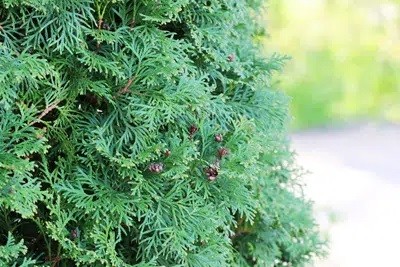Whether pictorially malleable specimen plant or opaque hedge, the thuja is one of the most widespread ornamental shrubs of private front yards and gardens. Despite an intensive growth and a comparatively simple care, plants discolor again and again from the usual, rich green to brown. How to explain the causes and measures to turn the unpleasant brown back into a fresh, healthy green.
From cause to remedy
Understandably, amateur gardeners and garden owners are primarily interested in how they can make their tree of life shine in green again as quickly as possible. However, because of the different causes that can lead to the unloved brown coloration, the measures against it also turn out to be very different. Remedy without knowledge of the cause is therefore hardly possible effectively and would be in the best case a lucky coincidence.
Brown equals dry?
Usually, browning in plants or plant parts is accompanied by drying of the affected shoots or leaves. This is because the browning usually results from the absence of plant sap and the closely associated breakdown of chlorophyll. Dry does not always mean complete desiccation and death. In this case, remedial action would hardly be possible, because completely dried up conduction pathways of Thuja are usually so intensively damaged that revitalization is hardly possible. Instead, browning usually occurs as soon as the water content drops, so that revitalization and a return to green color is quite possible if the reaction is early.

Understandably, amateur gardeners and garden owners are primarily interested in how they can make their tree of life shine in green again as quickly as possible. However, because of the different causes that can lead to the unloved brown coloration, the measures against it also turn out to be very different. Remedy without knowledge of the cause is therefore hardly possible effectively and would be in the best case a lucky coincidence.
- Winter browning originally adaptation of wild thuja to extreme frosts of the North American homeland
- brown coloration beginning in late autumn and disappearing in spring with the onset of the growth phase
- occurring in wild species and old cultivated forms
- modern cultivated forms no more winter tan present
- BUT: winter browning indicates higher frost hardiness
Drought
Both a lack of precipitation, and too little watering, or simply the lack of ability of plants to absorb the water offered, leads to low water content in the tree of life with brown coloration progressing from the leaves.
Conditions:
- Dry summers
- Cold winters
- Soils frozen through (then water absorption by the roots is not possible)
- Strong, dry winds
Measures:
- Ground covers of bark mulch, etc., to counteract desiccation
- Regular watering, in winter on frost-free days
- Prevent by watering intensively before the onset of frost to fill water reservoirs in soil and plant
Salt
Whether road salt, or the too well-intentioned use of blue corn, the thuja is sensitive to any form of salts if they act too intensively on him. The result is brown discoloration of the shoot tips, and later the entire shoots. Remedy for the plant well possible, although the affected shoots are usually lost.
Remedy:
- cut off and dispose of withered thuja shoots
- Rinse off plant and rinse off salts from splashing water, etc.
- Water soil well to wash out salts into deeper soil layers
- Reduce mineral nutrients at first to normalize water balance
Acidic soils
If the soil around the thuja has a too acidic pH, a high amount of free manganese usually accumulates in it. The plant reacts to this by brown-black needle discoloration in conjunction with increasing desiccation.
Caution: Influencing the pH should never be done by feel, but should always be controlled and accompanied by test strips!
Remedy:
- Work acidic lime into the soil.
- After two to three months, add compost and rake in to balance the nutrient supply to the soil.
Diseases
Various diseases can also cause the shoots and leaves of Thuja to dry up and turn brown. In most cases, these are fungal diseases, such as:
- Pestalotia shoot dieback
- needle or scale browning
- Kabatina shoot dieback
What they all have in common is the fungus as the pathogen, as well as the spread from the young, particularly susceptible shoot tips. Remedial action can be taken mainly by rapid and targeted countermeasures:
- Cut back infected shoots
- Spraying fungicidal agents
- Prevention by balancing the nutrient balance to reduce susceptibility (especially magnesium and calcium).
Attention: Another common disease is Thuja root rot. Here, the fungi specifically attack the roots, so that the effects only become apparent when the entire plant is already irreparably damaged. A remedy is therefore hardly possible!










